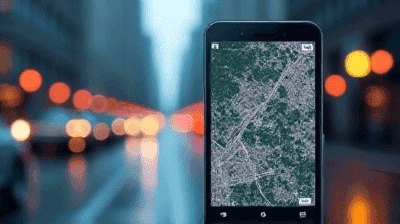
In the modern age, urban air quality has become a significant concern for public health and environmental sustainability. With rising pollution levels exacerbated by industrial activities, transportation, and urbanization, understanding local air quality dynamics is more critical than ever. Enter the Internet of Things (IoT) – a transformative technology that is reshaping the way we monitor air quality in our cities.
Air quality refers to the condition of the air within our environments, particularly in relation to the presence of pollutants. Common air pollutants include particulate matter (PM), nitrogen dioxide (NO2), sulfur dioxide (SO2), carbon monoxide (CO), ozone (O3), and volatile organic compounds (VOCs). Poor air quality can lead to serious health issues, including respiratory diseases, cardiovascular problems, and even premature death.
Air pollution affects millions of people around the world. According to the World Health Organization, around 7 million premature deaths are attributed to air pollution each year. Additionally, air pollution has detrimental effects on the environment, including contributing to climate change, harming wildlife, and damaging ecosystems.
Given the health implications and environmental consequences of poor air quality, effective monitoring is crucial. Traditional air quality monitoring systems often rely on a limited number of stationary monitoring stations that cover large geographical areas, making it challenging to capture localized pollution events. This is where IoT technology comes into play.

The Internet of Things (IoT) refers to the network of physical devices connected to the internet that collect and exchange data. These devices can range from smart home appliances to industrial sensors. In the context of air quality monitoring, IoT refers to numerous small sensors deployed throughout urban environments to measure air quality parameters in real time.
Data Collection: IoT sensors continuously monitor air quality parameters such as PM, NO2, CO, and other pollutants. These sensors often employ low-cost technology to provide accessible data.
Data Transmission: The collected data is transmitted to cloud-based platforms via wireless communication protocols (such as cellular, Wi-Fi, or LoRaWAN). This allows for real-time access to air quality information.
Data Processing and Analysis: Once the data is in the cloud, it can be analyzed and processed. Advanced algorithms and machine learning techniques can be employed to identify pollution trends, hotspots, and potential sources of emissions.
Visualization: The processed data is displayed in user-friendly formats, often as hyper-local air quality maps. These maps provide real-time insights into air quality conditions at various locations within the city.
Sensors: These are the primary devices responsible for detecting air pollutants. They can measure various parameters and are often designed to be compact and low-cost.
Gateways: Gateways serve as intermediaries between the sensors and the cloud infrastructure. They collect data from multiple sensors and facilitate transmission.
Cloud Platforms: The cloud infrastructure enables data storage, processing, and analysis, allowing users to access real-time air quality information.
User Interfaces: Applications, dashboards, or websites that present air quality data in an accessible format for users, including graphs, maps, and alerts.
Creating hyper-local air quality maps using IoT sensors offers numerous benefits that can improve urban planning, public health, and community engagement.
One of the key advantages of IoT-enabled air quality monitoring is the real-time access to data. Citizens, city planners, and health officials can obtain instant insights into air quality at specific locations. This immediacy allows for timely responses, such as issuing health advisories during pollution spikes.
Traditional air quality monitoring stations may be few and far between, providing a limited understanding of spatial variations in air quality. IoT sensors can be deployed on a larger scale, allowing for denser networks that capture pollution data at a hyper-local level. This granularity helps identify pollution hotspots that may otherwise go unnoticed.
Hyper-local air quality mapping helps empower local communities by providing them with actionable insights into their environment. Citizens can take proactive measures to protect their health, such as avoiding outdoor activities during periods of high pollution. Moreover, community engagement can foster initiatives advocating for cleaner air.
Policymakers can utilize hyper-local air quality data to make informed decisions regarding urban planning and pollution management. Insights from detailed air quality mapping can guide infrastructure improvements, zoning regulations, and sustainable development practices, ultimately contributing to better overall air quality.
Urban areas often experience disparities in pollution levels, disproportionately affecting marginalized communities. Hyper-local air quality mapping helps shine a light on these inequalities, allowing for targeted interventions that improve air quality in vulnerable neighborhoods.

Paris has undertaken an ambitious initiative to monitor air quality across the city using a network of IoT sensors. The "Air Quality Observing System" integrates numerous low-cost air quality monitoring devices to collect data on NO2 and PM levels. The real-time information is made available to the public through an interactive online platform, empowering citizens and informing urban policy.
In Los Angeles, the South Coast Air Quality Management District has deployed a network of IoT sensors to monitor air quality at a hyper-local level. The data collected helps identify pollution hotspots, track emissions trends, and enhance public awareness. This project aims to improve air quality management strategies and support community health initiatives.
Berlin has seen a rise in citizen-led initiatives designed to measure air quality using IoT sensors. Community groups have collaborated with researchers and local universities to deploy low-cost sensors throughout the city. The collected data contributes to hyper-local air quality maps and promotes greater community involvement in environmental monitoring.
In Beijing, where air pollution remains a significant challenge, IoT sensor networks are used to monitor air quality in real time. The city has implemented a program that combines data from official monitoring stations with data from low-cost sensors deployed across neighborhoods. This hyper-local approach helps residents stay informed about pollution events and encourages governmental accountability in pollution reduction efforts.
While the implementation of IoT sensors for air quality monitoring offers considerable benefits, several challenges must be addressed to ensure effective deployment and accurate data collection.
Low-cost sensors may be susceptible to variability in their readings due to calibration issues, environmental factors, and interference from other pollutants. Ensuring the accuracy and reliability of the data collected is crucial to the effectiveness of hyper-local air quality mapping. Regular calibration and validation against reference-grade instruments are essential.
The sheer volume of data generated by an extensive network of IoT sensors presents challenges in terms of data management, processing, and analysis. Effective data storage solutions, analytics capabilities, and visualization tools are necessary to make sense of the information and provide actionable insights.
As with any IoT deployment, privacy and security concerns must be considered. Data collected by air quality sensors could potentially be misused or exposed to unauthorized access. Ensuring secure communication channels and data protection measures is vital for maintaining user trust.
Establishing and maintaining a network of IoT sensors for air quality monitoring requires adequate funding and resources. Local governments, nonprofits, or community organizations may need to secure funding to support the deployment, maintenance, and operation of sensor networks over time.
Educating the public about the significance of air quality monitoring and the information provided by IoT sensors is critical. Awareness campaigns and community engagement efforts should accompany the deployment of sensor networks to enhance public understanding and stimulate participation in environmental initiatives.

The future of IoT sensors and hyper-local air quality mapping is promising, with exciting advancements on the horizon:
Ongoing research and development in sensor technology are expected to lead to more accurate, durable, and affordable air quality monitoring devices. These advancements will improve data quality and expand the deployment of IoT sensors across urban areas.
Artificial intelligence and machine learning algorithms can enhance data analysis capabilities, enabling better prediction of air quality trends and identifying pollution sources. Integrating AI into IoT ecosystems will allow for more sophisticated decision-making processes in urban planning and pollution management.
IoT air quality monitoring will increasingly be integrated into broader smart city initiatives. This integration will allow for seamless communication between various urban systems, empowering city planners with real-time data to optimize transportation, waste management, and public health interventions.
The growing trend of citizen science initiatives will facilitate greater community involvement in air quality monitoring. Collaborations between researchers, governments, and citizens will enhance datasets, provide diverse perspectives, and promote collective action to improve urban air quality.
As hyper-local air quality data becomes more commonplace, policymakers will be better equipped to craft regulations that reflect the lived experiences of communities regarding air quality. This information will be paramount for creating more effective air quality regulations and achieving environmental justice.
The advent of IoT technology is transforming the way we monitor and understand air quality in urban environments. Through the deployment of sensor networks capable of creating hyper-local air quality maps, cities can gain valuable insights into pollution dynamics at a granular level. This information empowers communities, informs policy decisions, and fosters greater awareness of environmental health.
As we continue to prioritize sustainable practices and public health, the role of IoT in air quality monitoring will only grow stronger. By embracing this innovative technology, we can work towards healthier urban environments, reduce the adverse effects of air pollution, and create spaces where communities can thrive.